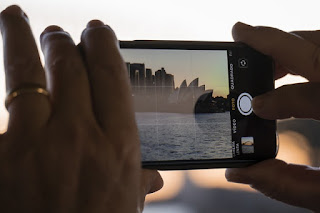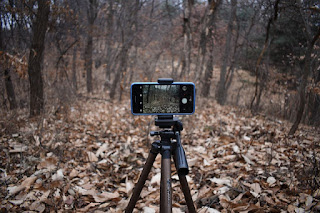Introduction:
Phone Photography- How to take good pictures from your smartphones. Today everyone wanted to click photographs from their phones, it's very simple, but if you follow some guidelines/ Rules of Phone Photography you will be amazed to see the results of your own photographs. You can start with whatever phone you have but keep in mind the following of Phone Photography- How to take good pictures from your smartphones.Also read: Mobile Photography Tips You Must Know
Table of Contents
- · How to take professional pictures with phone,
- · How to take pictures of pictures with phone,
- · How to take good pictures with a phone,
- · How to take good pictures of yourself with a camera phone,
- · Mobile photography,
- · Cell phone photography tips,
- · Mobile photography ideas for beginners
Use the grid/rule of third
Now, what will all of this have to do with the rule of thirds? In its most basic type, the rule of thirds stipulates that the most necessary subjects of the icon must be placed on the grid lines and at the intersections of these lines, this unit of an area called junction points. during this icon, you will see that I have placed the subject on the correct vertical grid, the most necessary part is placed at the junction.
•The purpose of the grid lines area unit to help you compose your image.
For example, if you take a landscape image, you want to align the horizon so that your image is level without having to manually change the cropping or angle in post-production.
Depending on your camera, you may be able to define completely different lines or overlays for different "composition rules". the most common example is that the "rule of thirds", and possibly the default gridlines on your camera area unit for this. different varieties embrace diagonal overlays, a golden quantitative relationship, and a golden spiral.
All of these totally different area unit principles of grid overlays support what makes an image enjoyable to look at - none is applicable all in all and will be used as a supplement to a guide rather than a hard and fast rule to follow to improve Phone Photography.
Most smartphones today use an autofocus technique called distinction detection. Basically, it's an autofocus system supported by trial and error. The camera phone lens is moved back and forth until it finds the position of greatest focus.For example, if you take a landscape image, you want to align the horizon so that your image is level without having to manually change the cropping or angle in post-production.
Depending on your camera, you may be able to define completely different lines or overlays for different "composition rules". the most common example is that the "rule of thirds", and possibly the default gridlines on your camera area unit for this. different varieties embrace diagonal overlays, a golden quantitative relationship, and a golden spiral.
All of these totally different area unit principles of grid overlays support what makes an image enjoyable to look at - none is applicable all in all and will be used as a supplement to a guide rather than a hard and fast rule to follow to improve Phone Photography.
Camera focus
To see once the image is focused, your smartphone uses an algorithmic program supported by measuring the distinction. Generally, the amount of distinction is highest in an image after the thing is focused (the image has a sharp definition and the tones are very vivid). If the image is out of focus, the colors may tend to be blurred together. this implies that there is a lower level of general distinction.
Remove Negative Spaces from your frame
A negative area, or white area if you're at home with the construct from style, leaves an open area in a picture to present the attention a chance to rest and draw the viewer’s attention to the topic.
The subject of the picture is that the positive area and therefore the space around or between the subject(s) is that the negative area.
The negative area doesn’t get to be empty, or white, however, it will be got to have very little distinction or distraction. Within the picture higher than, the sky is a negative area despite the actual fact that it's a gradient of colors from the sunrise.
The subject of the picture is that the positive area and therefore the space around or between the subject(s) is that the negative area.
The negative area doesn’t get to be empty, or white, however, it will be got to have very little distinction or distraction. Within the picture higher than, the sky is a negative area despite the actual fact that it's a gradient of colors from the sunrise.
Avoid Zooming
Use Natural Lights
Paying extra attention to light is perhaps the single most vital step that you can improve your photography. With multiple landscapes, having smart natural lighting will be even more necessary than selecting the subject itself. Different types of natural light weights can also produce a great style of subject appearances, although they all have an equivalent light source. Learn how to get the right lightweight for your subject using the distinctive qualities of your specific time of day and weather.
Honestly, having a booth will build or break your photography. Using a tripod will give a better Phone PhotographyUse Mobile Tripod
For example, the quality shutter speed is about 1/60 of a second. If you are abundant, you are not up to the task; the motion blur is also visible because the hands of a few people are really stable.
With a bracket, that's no problem! After all, these multi-legged tools are a must for any form of long-exposure photography. Once it is below 1/30 of a second or so, you will by no means get a sharp image without having a camera holder.
Getting your photos on the PC associated with a Copywriting program gives you access to a second commenting machine. You can learn a lot about how to take photos by looking at the ones you took before.
Looking at the image closely reveals problems. You won't notice some problems if you just size and transfer a photo. Comparing the results with the settings used offers instant feedback. Knowledge of EXIF in an image is priceless to give you clues as to why a photograph might not have worked. I use Snapseed and Lightroom Application for mobile editing.
Playing with photos in a post is almost like touching them. Experimenting with sliders helps you "feel" the potential in a very clear image. The talent to learn to check, difficult to define, and more difficult to teach, is formed much more easily with this method of shooting and feedback.
So here is the main of our mobile photography tips: if you want clear and sharp photos, please clean your phone lenses!
With a bracket, that's no problem! After all, these multi-legged tools are a must for any form of long-exposure photography. Once it is below 1/30 of a second or so, you will by no means get a sharp image without having a camera holder.
Feel Free to Edit / Post-Processing
Looking at the image closely reveals problems. You won't notice some problems if you just size and transfer a photo. Comparing the results with the settings used offers instant feedback. Knowledge of EXIF in an image is priceless to give you clues as to why a photograph might not have worked. I use Snapseed and Lightroom Application for mobile editing.
Playing with photos in a post is almost like touching them. Experimenting with sliders helps you "feel" the potential in a very clear image. The talent to learn to check, difficult to define, and more difficult to teach, is formed much more easily with this method of shooting and feedback.
Clean lens
Your phone spends a lot of your time on your hands, beyond your purse or pocket. And as a result, the camera lenses will be covered in dirt, dust, and fingerprints. A dirty lens can leave smudges, blurs, or dirt spots on your photos and that won't look good.
So here is the main of our mobile photography tips: if you want clear and sharp photos, please clean your phone lenses!
Mobile Photography Tips for Beginners
- Use a soft material (or even your shirt) to gently clean the lens.
- If you have been shooting on the beach or in dirty conditions, blow out the lens first. This can remove sand or dirt that will scratch the lens.
- Cleaning the lenses of your phone may seem obvious. However, most people do not consider trying and doing it.
- Get used to cleaning the lenses of your phone. It will create a huge distinction to the clarity of your photos.
Adjust Exposure
HDR
HDR, or high dynamic variation images, is currently a typical feature on every smartphone and mechanic and can help you take more attractive photos. It can also be daunting if you're not sure how to start.
Below, we have a tendency to answer a reader question and dig deeper into everything you want to understand how and when to incorporate HDR into your photography repertoire.
Happy Clicking.
Below, we have a tendency to answer a reader question and dig deeper into everything you want to understand how and when to incorporate HDR into your photography repertoire.
Conclusion:
The best way to learn Phone photography to explore and experiments with your photography habits. With practice, you can get better results. I hope you all enjoy reading my article on Phone Photography- How to take good pictures from your smartphones now just go explore and take photographs. You can also read 7 Myths about Photography for beginners.Happy Clicking.






Please let me know if you have any questions ConversionConversion EmoticonEmoticon